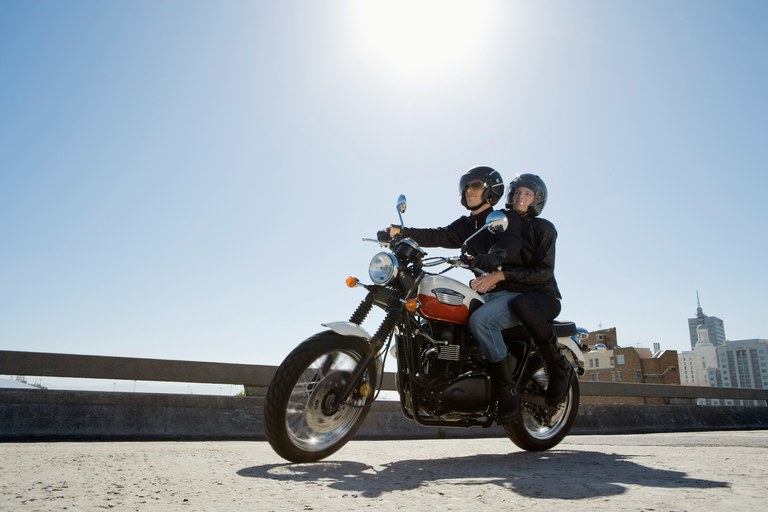What Virginia Tech learned about how and why we crash our motorcycles (J&P Cycles)
Shift into Safe News
What do you learn if you pick 100 riders, put five video cameras and data-logging equipment on their motorcycles and record them for a total of 366,667 miles?
Several things, some of which we knew, some surprising. Intersections are dangerous. We either need to pay better attention or work on our braking techniques, because we crash into the back of other vehicles way too often. We’re not good enough at cornering, especially right turns. And we drop our bikes a lot (probably more often than any of us imagined or were willing to admit).
The study was done for the Motorcycle Safety Foundation (NSF) by the Virginia Tech Transportation Institute (VTTI). Of course there’s a lot more to it than those findings above, and I’ll get further into the results in a minute. But first, why do we need some men and women in lab coats to tell us why we crashed?
How Virginia Tech studied motorcycle crashes
The VTTI researchers recruited 100 riders from age 21 to 79 in California, Arizona, Florida and Virginia. They outfitted their motorcycles with video cameras showing the rider’s face and forward, rear, left and right views. GPS and data loggers captured other information, such as brake pressure, acceleration, etc.
While 366,667 miles of riding sounds like a lot, this study still falls short of fulfilling the hopes we had a decade ago of a comprehensive national study. The telling statistic is that in the entire study there were 30 crashes and 122 near-crash events. There are far more than 30 ways to crash a motorcycle, so drawing conclusions from that sample size is tricky. The inclusion of near-crashes helps, however. Sometimes those events teach us just as much or more than a crash.

The VTTI team explains its methodology, including efforts to standardize and define terms and procedures. All the details are in a 20-page report you can download from the MSF. But here are some of the things I picked out.
Where we crash
Intersections. No surprise there. VTTI created a system to calculate how much a certain scenario or riding behavior increased the odds of a crash or near-crash. An uncontrolled intersection presents nearly 41 times the risk of no intersection. A parking lot or driveway intersection is more than eight times as risky and an intersection with a signal is almost three times as risky.
A downhill grade increased the risk by a factor of four while an uphill grade doubled it. Riders were nine times as likely to crash or have a near-crash incident on gravel or dirt roads than on paved roads. And riders were twice as likely to have an incident in a right hand turn than on a straight section of road (crossing the center line is considered a near-crash scenario, even if nothing else bad happens).
How we crash
We complain all the time about other people on the road trying to kill us, especially cars pulling into our paths. The VTTI study partially backs that up. Of the 99 crashes and near-crashes involving another vehicle, the three categories of other vehicles crossing the rider’s path add up to 19.
Here’s the surprise, however. What’s the most common scenario? Riders hitting (or nearly hitting) another vehicle from behind. There were 35 of those incidents.
Learn more about motorcycle crashes and the Virginia Tech Transportation Institute study here.
